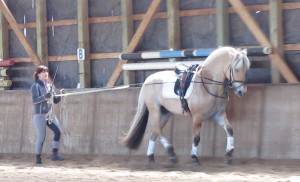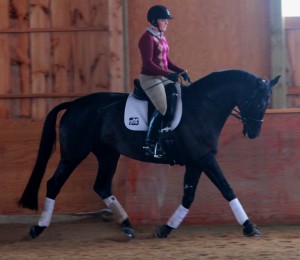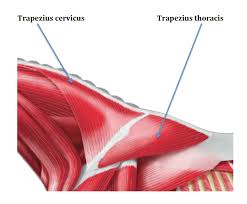Summer’s Blog
The beginning of my journey…
December 22, 2014 by
When I started this journey, I found that there was alarmingly little information available and could find only one reference to a rider that had experienced the same injury. I was very disappointed and extremely lost. So, I thought “Maybe I can blog about my experience and help someone like me!”
In November of 2013, I was riding in a clinic with a coach I only get to see about every 6-8 weeks. I always push myself really hard and WELL out of my comfort zone when I ride with this coach and consequently learn huge amounts in very short periods of time. This coach was complaining about the lack of flexibility in my right hip compared to my left. Me being me, I decided I was going to fix it!
After the ride I was quite sore but chalked it up to sitting in a different position and probably having used muscles I hadn’t used in a long time (if ever!). I carried on like this for months, pushing myself to achieve the position my coach had asked for. It would get sore, I would back off. It would feel a bit better, I would push it… until one day I couldn’t even lay down in my bed anymore. I had pain deep in my groin and radiating out all the way around my hip and into my back. I couldn’t lay on my back or on either side. I had to contort myself into this bizarre half-up, half-down circ de soleil like position on our reclining couch, just so I could get some sleep. I also had this bizarre stabbing pains in my stomach (one right above my belly button on the centre line and a couple lower in my abdomen) that I was sure were cancer. I had a colonoscopy and everything! (which came back completely normal, aside from an unrelated hiatal hernia) I was at a loss, so I decided to try a chiropractor thinking I had maybe pinched a nerve.
My chiropractor was amazing! He picked up my leg, moved it maybe twice and said that we needed to get some x-rays. He suggested that he do minimal treatments until we knew for sure what was going on but told me he suspected I had a labral tear and possible FAI (Femoral Acetabular Impingement). If any of you reading this have struggled in getting a diagnosis, you will know how lucky I was to find this chiropractor. Many go for years without knowing what is happening to them. My own doctor admitted that she had never dealt with this injury before. She was incredible as well. She took care of me, helped me find forums online, researched it herself and told me that I should probably not be riding. Both of these professionals were exceptional and I feel incredibly lucky to have had their help and compassion.
Like many of you, I’m sure, I kept riding, started researching and waited to hear back about my x-rays. In the meantime my GP booked an MRI Arthrogram (more on this later…) I heard back about my x-rays and was extremely disappointed to hear that the hospital said they were normal. My chiropractor then took the initiative and sent a copy of my x-rays to a radiologist friend of his who happened to specialize in hips and who also had had a hip injury herself. She read them completely differently from the hospital and said that I had a “Mixed impingement”. Huh??? I later found out that this meant I had a CAM and Pincer impingement. This in layman’s terms means that I had an extra bump of bone on my hip socket and an extra bump of bone on my femur. The problem with an impingement is that when you are a “High-level athlete” (just means you repeat motions that require above average use of hip flexion, often) this impingement can actually crush and tear your labrum as well as cause arthritic changes. The labrum is the ring of cartilage in the hip socket that the femur sits in. It works a little bit like a suction cup as well as a buffer between the femur and the hip socket. When the labrum tears all kinds of things start to go wrong, including severe pain. This is where it gets a little bit tricky… The cartilage of the labrum is full of nerve endings. When it is torn or crushed by the impingement, those nerve endings become exposed, angry and extremely reactive. This causes referred pain. Referred pain is pain that does not exist in exactly the spot the injury occurred (like the pains in my stomach) It can be burning, numbness, stabbing or general discomfort. The issue with this is that it becomes very difficult to pinpoint the source of the pain. This is one of the reasons that people go mis or undiagnosed with hip pain for so long. It doesn’t always present itself in a completely straightforward manner.
So, this is how my journey to recovery began. I will write tomorrow about exactly how my pain presented itself, how I dealt with it and what I did next!
Great clinic with Christian Garweg!
June 11, 2014 by
Another terrific clinic with Christian! We had quite a variety of horses that attended. Everything from green, 4 year olds to Prix St. Georges horses. As usual a ton of really interesting information and creative exercises. Christian approaches each horse with a completely different strategy and really understands each horse and rider as an individual.
Christian works with dressage horses and jumpers and has a wealth of tools at his disposal, which he is happy to pass on to his students. At this clinic, one of our riders even had a long-lining lesson! It was fun to watch and very informative.

Lori Albrough and Ooruk of Bluebird Lane Fjords, learning how to long-line
It is always exciting to see what Christian can bring out in the horse and rider teams. He pushes each horse and rider outside of their comfort zone and shows they what they can truly be capable of. It is very inspiring to watch the riders and horses blossom under his instruction.
If you haven’t experienced one of his lessons yet, I encourage you to do so when he returns in July for his next clinic. I will post details here as I receive them. Riding and auditing spots are always available and are open to all. If you are interested in joining us, please send me and email or give me a call. These clinics are always very fun and are held in a very positive and supportive atmosphere where everyone is welcome and no one is judged. We are all just here to learn!
Toe Flicking
April 14, 2014 by
Dressage horses are truly beautiful. When we watch these horses move with so much impulsion, balance and cadence it is easy to misinterpret some things we see. One of these instances is toe flicking. This is when at the completion of the stride, the horse flicks his front toes up towards the sky. In some horses, you can almost see the sole of their foot. The appearance of “toe flicking” can be used as a diagnostic tool for the rider or judge. This is most often seen in the medium or extended trot but more and more commonly in the collected trot. If you find your horse is flicking its toes, you can be almost positive that you have lost its shoulders and that the horse is on the forehand. The momentum has dropped down from the topline and into the horse’s elbows and the horse no longer has that wonderful, ground covering, “front crawl” feeling.
There are many exercises to help fix this occurrence but a very simple exercise is to work the extended trot on the long wall. Begin the long wall in shoulder-in, as you begin to increase the impulsion and ask for more ground cover, allow the horse to straighten. As soon as you feel you are losing the shoulders, push the horse back into the shoulder-in position. As you repeat this exercise, you will be able to go longer and longer in straightness with the shoulders up.
*For another exercise to keep your horse’s shoulders up, please see my article How to Achieve a Soft Back.
Christian Garweg Clinic
by
On the week of May 11th-18th, German rider, coach and trainer Christian Garweg will be returning for a clinic. The clinic will be hosted by Allessa Fisher at her lovely farm just south of Guelph in Puslinch. We are hoping that this beautiful weather will continue and that perhaps we will be able to be outside! If not, Allessa’s farm also has an almost full-sized, mirrored indoor arena.

Summer and young horse, Anastacia working with Christian Garweg
I have been riding with Christian and organizing clinics with him for years now and we always have terrific feedback! Christian is a very enthusiastic coach who will no doubt put as much energy into your lesson as you do. His methods and training are very correct but his approach to the development of your horse and your riding skills is always creative and individualised. If you are having trouble finding the key to unlocking your training issues, Christian will get to the heart of it!
Riding and auditing spots are available and you will be able to book both through emailing me at info@summerbaillie.com. Everyone is welcome! Please come and join us for a few days full of fun, inspiration and of course learning!
Please check Christian out at his website: www.christiangarweg.com
How to achieve a “soft back”
by
We always hear coaches talking about getting our horses to soften and use their backs. There are several sections of the back that the horse can resist from but today we are going to discuss how and why we need access to the base of the neck. It is very important to have this section of the topline soft because without this key section being relaxed the horse can neither lift its shoulders nor connect to its lower back.
The group of muscles that I am talking about are illustrated in the picture below. This triangular group of muscles, when trained properly should appear to reach from the top of the withers and line of the shoulder, all the way up the neck to behind the ears. It should not be fat or thick at the base of the neck. If it is, the horse is holding his neck by pulling it backwards into the shoulder. The correct feeling of the base of the neck being soft can be described as the feeling of the neck “draping” from the withers without resistance.
The horses should reach down and out with its nose and look for the contact, when you have achieved the correct position. This feeling can be obtained through the use of bend, paying particular attention to the way the horse bends its neck where it comes out of the shoulder. To break the initial tension in that area, imagine that when you bend the horse’s neck left, the shoulders will fall out to the right and vice versa.
By removing the tension from the base of the neck, the rider is also in most cases taking tension out of the horse’s lower back. A horse should balance itself through long, relaxed topline muscles. Often the idea of collecting a horse makes the rider think they need to contract the horse’s muscles. This is not the case. Collection should always be achieved through relaxation. Many riders will also endeavour to stretch their horse’s but without ensuring the muscles in front of the withers are soft and long, the exercise is wasted. The same is true for a horse that is low and appearing to stretch but behind the vertical. If the horse’s nose is not open when it is stretching, it will not gain the strength required in the lower back for the higher levels. Obtaining this feeling will allow you to lift the frame through the whole topline, not just bring the neck up leaving the shoulders and back down.
*Please read my article on Toe Flicking to help you understand some of the symptoms of an incorrect connection over the topline.